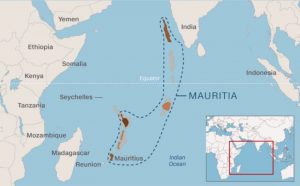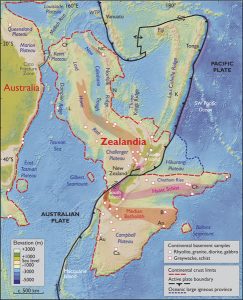Over the past week there have been two different news stories announcing the discovery of “Lost Continents”. Spoiler alert, neither is Atlantis and neither is in the Atlantic Ocean.
The first announcement comes from a team of geologists led by Lewis Ashwal of the University of Witwatersrand in Johannesburg South Africa. Professor Ashwal has named his lost continent Mauritia and it lies in the middle of the Indian Ocean. See the picture below.

Professor Ashwal bases his discovery on his analysis of Zircon crystals that he obtained on the volcanic Island of Mauritius, from which the continent gets it’s mane. Now the island itself is rather young, having been formed by volcanic activity approximately 8 million years ago. Despite the island’s geologic youth however, when Professor Ashwal measured the age of the zircons he had found there were many as old as 2 Billion Years Old. How could an 8 million year old island have 2 billion year old crystals on it?
First let me say a little bit about zircons or more formally zirconium silicate ZrSiO4. Now zirconium crystals always contain small amounts of the radioactive elements Uranium and Thorium. Once the zircon crystal is formed these unstable atoms begin to decay and by a measurement of the amount of the decay product, mainly Helium, in the crystal geologists can calculate the age of the crystal. Another key property is the hardness of the crystal which allows it to survive harsh environmental conditions like erosion and even metamorphism. Because of these properties, zircon crystals have become one of geology’s most useful tools.
Professor Ashwal also used the most recent studies of the seafloor in the area around Mauritius to outline the extent of his “Lost Continent. According to the professor, 200 million years ago Mauritia was a part of the Super Continent Gondwanaland, which also included South America, Africa, Australia, Antarctica and India. Breaking off about the same time as India some 60 Million years ago Mauritia is now mostly submerged. Only a few small islands remain of what was once a very large landmass.
The second, completely independent announcement of a “Lost Continent came only a few days after the story on Mauritia. This discovery is based upon work by Nick Mortimer a geologist with GNS Science in Dunedin New Zealand. In fact what Mr. Mortimer discovered is that what geologists thought was a single continent encompassing Australia and New Zealand was in fact two continents, Australia being one and New Zealand, with the islands going north up to New Caledonia, making up the “new” continent of Zealandia. The picture below shows how close these two continents are.

As with Mauritia, most of Zealandia is presently submerged and also like Mauritia 200 million years ago Zealandia was a part of the super continent Gondwanaland. To me the interesting thing about Zealandia is that it is so close to the Australian continent. Could we be looking at the breakup of one continent into two? If that is so this new discovery could tell us a lot about the breakup of continents in general.
I can still remember back when the idea of “Continental Drift” was just a crazy idea and over the last fifty years we have learned so much about the dynamics of our planet. I don’t know if schoolchildren are going to have to learn the names of Mauritia and Zealandia along with the other seven continents but I do know that there is much more to be learned about our home planet and I look forward to telling you all about it.
